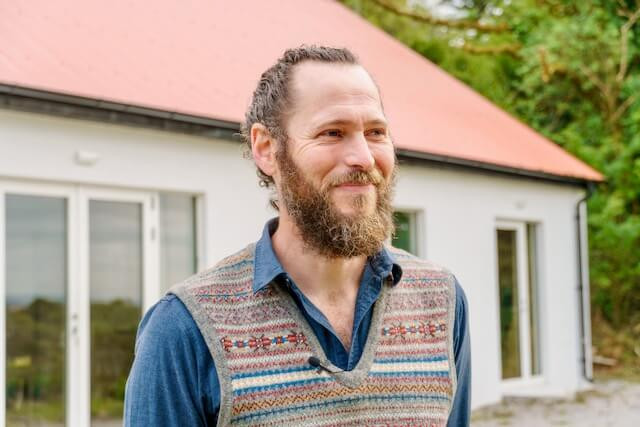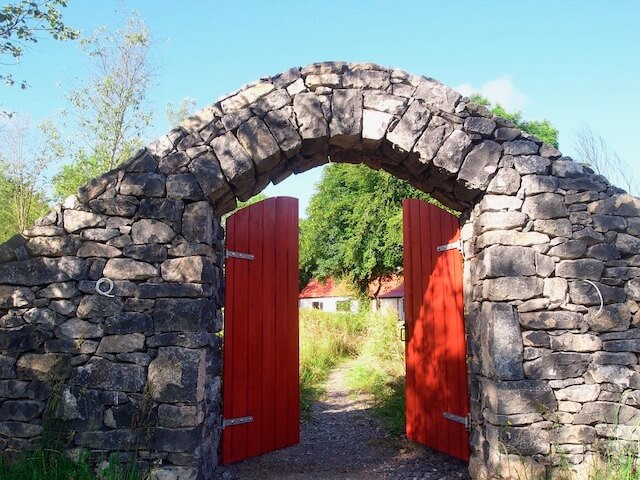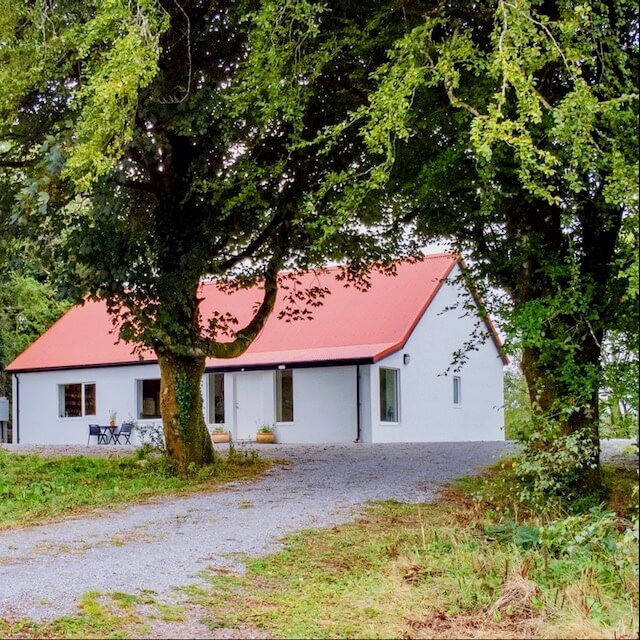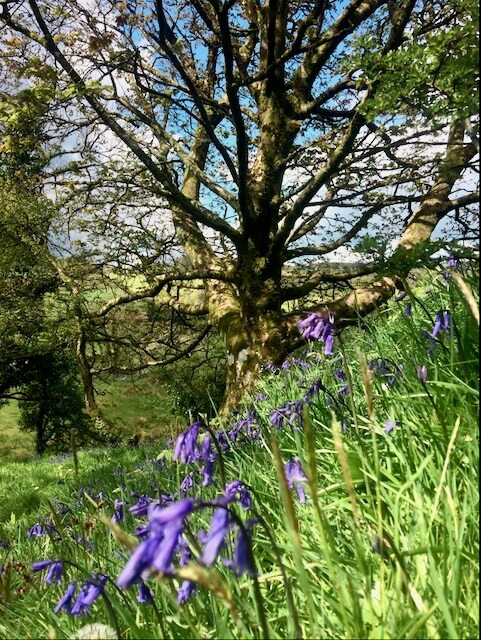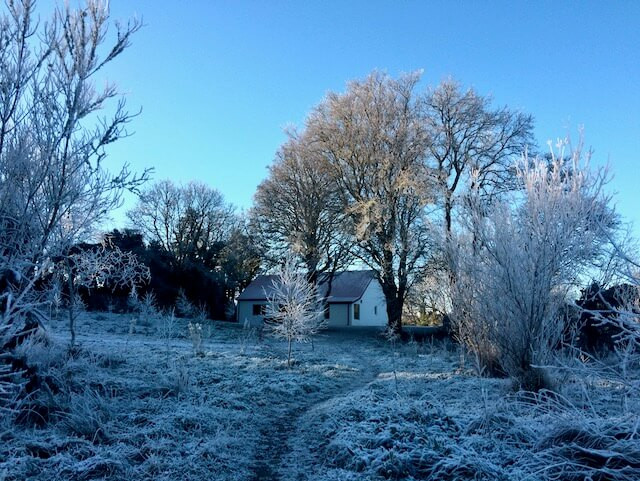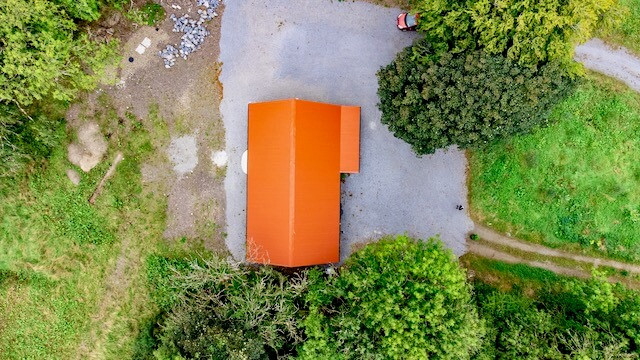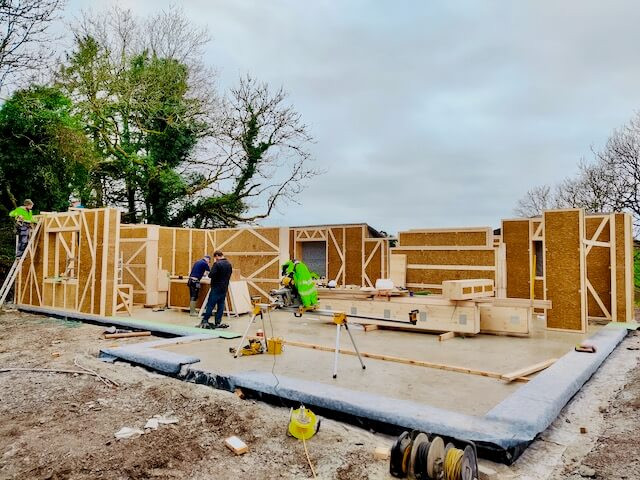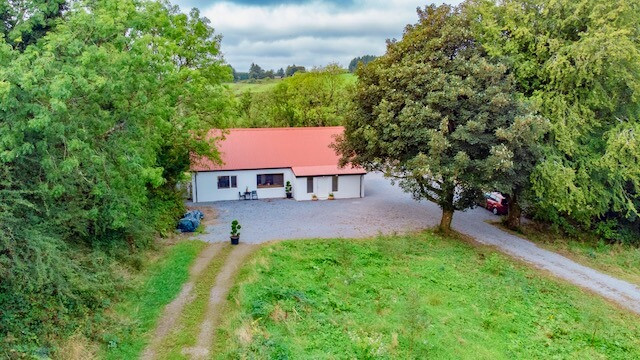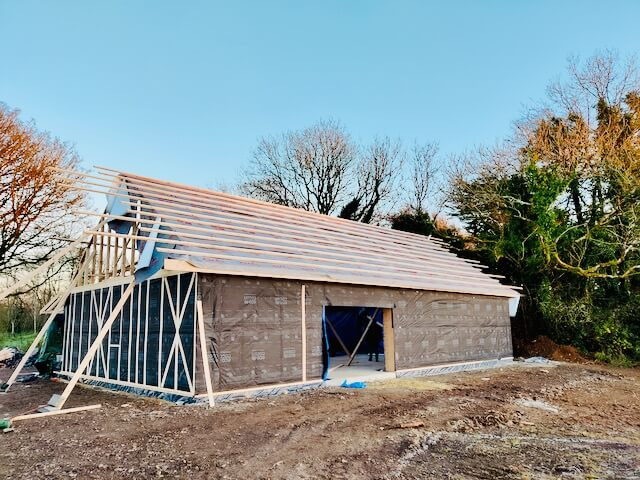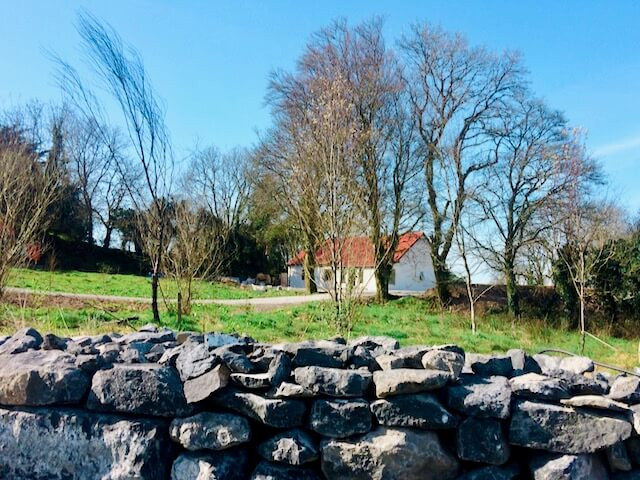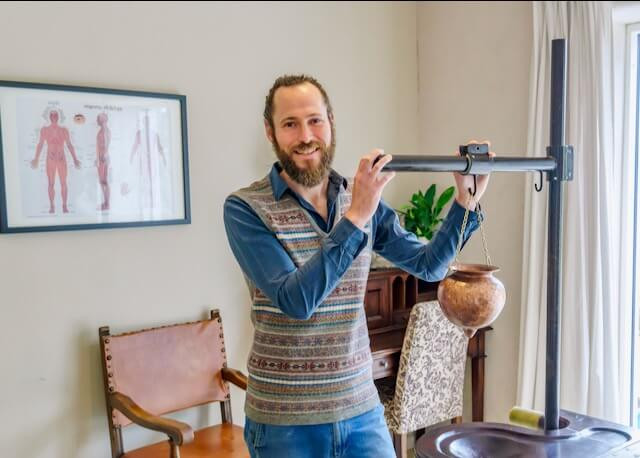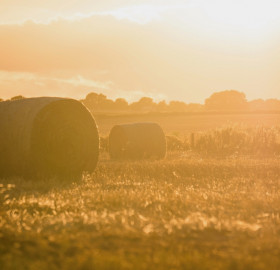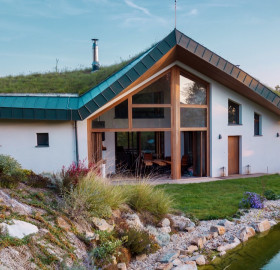Has a large piece of geography travelled half the world and landed in Ireland? Or perhaps we’ve gone a bit nuts? The answers are “no” and… “maybe”.
The story of Satmya begins 25 years ago in the United States, where an Irishman Doug Hyde was first introduced to Ayurveda. Along with curry and yoga, Ayurveda is one of the more popular Indian exports, and it’s been gaining traction in the West. The ancient medical practice provides answers to many questions about life, health and spirituality. It certainly resonated with Doug, who went on to study it for years and eventually brought a piece of India with him back to Ireland.
Together with his wife, Yvette, who chose the path of a naturopath, they opened a natural living and learning centre in East Clare called Satmya. The new building they built for their clinic is made of bio-based materials and is as natural as the botanical sanctuary they are creating there.
Needless to say we had some questions about the intriguing place. Doug was very generous with his time, and told us all we thought to ask.
- How did they manage to build the perfect natural building?
- What is “Vastu shastra” and how can it enhance Western house design?
- Why is their land attracting local wildlife?
- And what’s this about a mythical mountain?
Read on.
What is Satmya, and what does the name mean?
Satmya is a Sanskrit word that means “gradual adaptation through wholesome change”. This is the central ethos of our clinical practice. The intention was to create an integrated health centre based on both Ayurvedic and Naturopathic principles with a focus on education, and to make our services very accessible to the public.
Our business is now 16 years old, and we moved to our new EcoCocon building in 2022. Satmya has become an eco-friendly tranquil space for our clients and students with a medicinal herb garden, which had always been our vision.
It seems like there’s much more to it, though. You are in the process of creating a botanical sanctuary?
In 2018, we first saw the land where Satmya is now located. It was mainly pasture land with small belts of old trees. We are not farmers, but we do love nature, and we decided that we would rewild most of the land and give it back to nature – bar a few acres that we kept for medicine and food production. So far we have planted over 1500 native trees (including oak, birch, hazel, willow, holly, spindle, Scots pine and many others), medicinal trees, herbs and plants.
We get lots of wild visitors already including deer, hares, foxes, pine martens, red squirrels, badgers, pheasants, kestrels, cuckoos, marsh harriers, ravens, lots of frogs, newts and many others. Our hope is that over time we will restore the land, and Dronagiri will become a lush sanctuary for Irish wildlife and plants.
Dronagiri?
A name we gave to our land. It resonates with what we are hoping to create. Dronagiri is the name of the mythical mountain valley in the Ramayana, an Indian epic. It was said that Dronagiri was a place rich in medicinal plants.
The story goes that Hanuman was sent to Dronagiri to bring back Sanjeevani herb. When Hanuman arrived there, he could not identify the herb, and so he took the whole mountain back to Lanka. The site of the mythical Dronagiri in the Himalayas is now thought to be The Valley of Flowers, a Unesco world heritage site.
Intriguing. You’ve set quite an ambitious goal for your sanctuary. Do you have deep knowledge of horticulture to draw on?
We’ve always had a strong interest in organic gardening and nature. But no. Even after 10 years of dabbling, we’re still novices.
However, it is a really exciting process, and now that the building is complete, we can really turn our attention to the land. We are using a few different methods for restoring the land including permaculture and biodynamic, organic, no-dig and homeopathic agricultural methods.
At the moment we are designing and preparing a medicinal herb garden around the centre. We hope that this will give our clients and students the opportunity to learn more about the herbs that we use in our herbal dispensary.
Let’s go back to your new building where the centre is now based. It fits inconspicuously with the nearby buildings and the countryside, but there is more to it than meets the eye, isn’t there?
We wanted our building to be in harmony with the locale – rural county Clare. The design is similar to that of traditional Irish buildings, so it perfectly blends in the surrounding landscape. However, the orientation and the layout stray far from Irish tradition. We used Vastu shastra (the Indian Feng Shui), which loosely translates as the teaching or doctrine of dwelling.
It is a traditional Indian system of architecture based on ancient texts that describe principles of design, layout, measurements, ground preparation, space arrangement and spatial geometry. The designs aim to integrate architecture with nature, utilising geometric patterns (yantra), symmetry, and directional alignments.
What are we looking at in practical terms?
Our building is oriented along the cardinal points to match the primal elements – air, fire, earth, and water – with the internal functions of the building. For example, the “sunny south-east” is where our kitchen is located. This is the area where the fire element resides, so it’s perfect for a kitchen. The 5th element – space – is located in the centre of the building where we teach. All the other rooms are situated to benefit the function of the room according to the element residing there.
What about the material side of things? What is the centre made of?
Keeping with the theme of being in harmony with nature, the actual structure is made almost entirely of natural materials – straw, wood and clay. It is in many ways like an old traditional Indian building, but also like a very old traditional Irish building.
The ancient druids used the science of orientation too, which can be seen in many ancient stone circles and forts. We put a terracotta corrugated iron roof on the structure just like an old Irish farm or a cottage. So we have an old fashioned looking structure with a modern, energy efficient Passive House twist.
What made you decide to take this route? And why did you choose EcoCocon?
When we were deciding what type of building materials to use, we knew we wanted a healthy building made from natural materials that was also energy efficient and quick to build. But we didn’t know how to achieve this. Our engineer Fergus Merriman suggested EcoCocon, as he knew someone working for the company. He introduced us to Paul Lynch, who was a great help and saw our project all the way through to the end. We were very happy to be the first EcoCocon building in Ireland. The system ticked all the boxes.
How did you find the building process?
The building process was exciting, educational and stressful. As we were the first EcoCocon build in Ireland, we found it difficult to get reasonable quotes. Builders were reluctant to undertake such an unconventional venture. In the end, we decided to take off 6 months of work and build it ourselves. This obviously saved us money but reduced our income over that time. We had a lot of help from Fergus and Paul in figuring out what materials we needed, but sourcing these as well as the tradespeople was time consuming.
However, the overall process of planning the build and actually building was much quicker when compared to conventional methods. The build was over 90% completed only 7 months in, which was amazing.
Of course, we did have delays and setbacks. At one point we ran out of external fibre board insulation during a damp December, no less. The usual weather interruptions did not help either.
But I would say overall things went smoothly enough. The cost of building materials was comparable to a conventional build, however the health and feeling of the building is far superior to that of a conventional brick or SIP building.
The wildlife seems to enjoy visiting Dronagiri. How do human visitors react when they first visit? :-)
There is a lovely feeling inside the building and many people comment on it. They genuinely experience a sense of awe, and they love the feel of the clay plaster on the walls. We also love how the building feels, and we really enjoy working in it. It’s hard to quantify but it does feel peaceful and very comfortable.
Any final thoughts you would like to share with our readers?
I was a complete novice when I started the process of self building, and I have to admit that it was a very daunting undertaking. However, self-building an EcoCocon structure was very feasible, and I would recommend this type of building project to anyone with a passion for natural building, but who also wants a very sound structure at the end of it. The support we got from Paul Lynch from EcoCocon was fantastic, and it made the process go a lot smoother.
Doug Hyde
Doug completed a 4-year Diploma/apprenticeship with Jason Chandler at Ayurveda College in northern New South Wales, Australia. His wife, Yvette, is also a natural health practitioner with a bachelor degree in Health Science (BHsc), Naturopathy in Sydney, Australia. After finishing their studies, they continued to work in Australia for a few years before returning to Ireland. The first 15 years of managing their business were spent in Killaloe (a small village on the river Shannon). Finally, they moved to the new EcoCocon building in 2022. Today, their business is 16 years old.
“Although we loved our time in Killaloe, our dream was always to build our own centre that was eco-friendly and in a rural location where we could create a medicinal herb garden and have a more tranquil space for our clients and students.“

